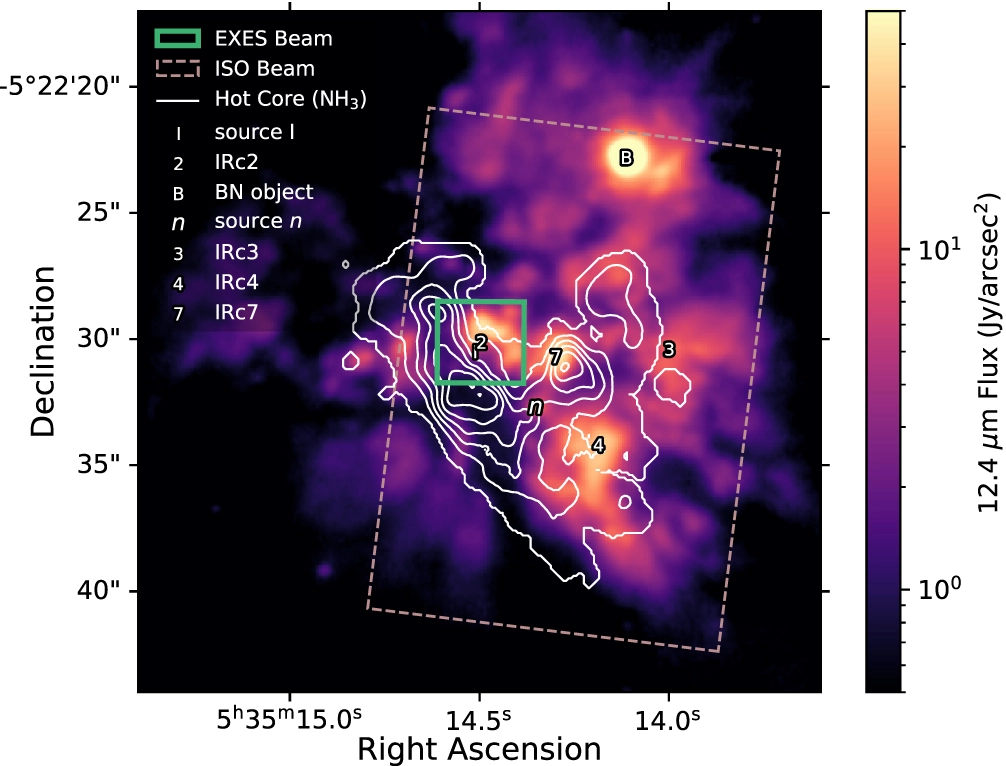The Mid-infrared Molecular Inventory toward Orion IRc2
The Becklin–Neugebauer/Kleinmann–Low (BN/KL) region near the center of the Orion molecular cloud 1 (OMC1) is the best studied region associated with massive star formation at an estimated distance of 418 pc away. The region hosts several distinct cloud components that trace different physical states of the nebula. We present a chemical inventory of the region using the Stratospheric Observatory for Infrared Astronomy (SOFIA) paired with the exceptional resolving power of the Echelon-Cross-Echelle Spectrograph (EXES).
You can find the abstract on the publications tab!

Mid-infrared (MIR) image of the Orion BN/KL region. The color map is the 12.4 μm flux (SUBARU/COMICS; Okumura et al. 2011). White contours are the hot core traced by the NH3 inversion transition (J, K) = (7, 7) (NRAO/EVLA; Goddi et al. 2011), and each level is 75 mJy beam−1 km s−1. The thick green box is the EXES beam for the 7.6a μm setting. The dashed brown box is the smallest beam used in the Infrared Space Observatory (ISO) survey (van Dishoeck et al. 1998). Symbols refer to regional features discussed in this work. The position of “2” for IRc2 is at the EXES beam center for all settings in this survey. The location of BN is from Gomez et al. (2005). All other symbols, source I, source n, IRc3, IRc4, and IRc7, are placed according to Okumura et al. (2011).
